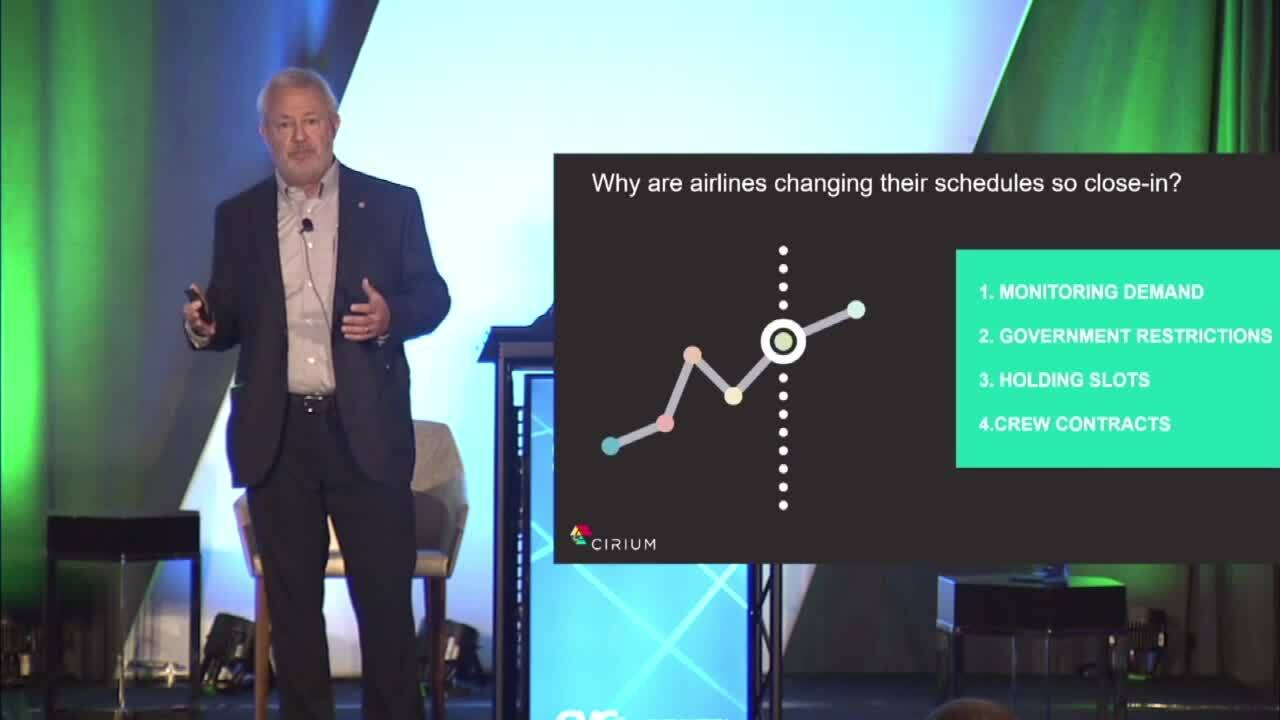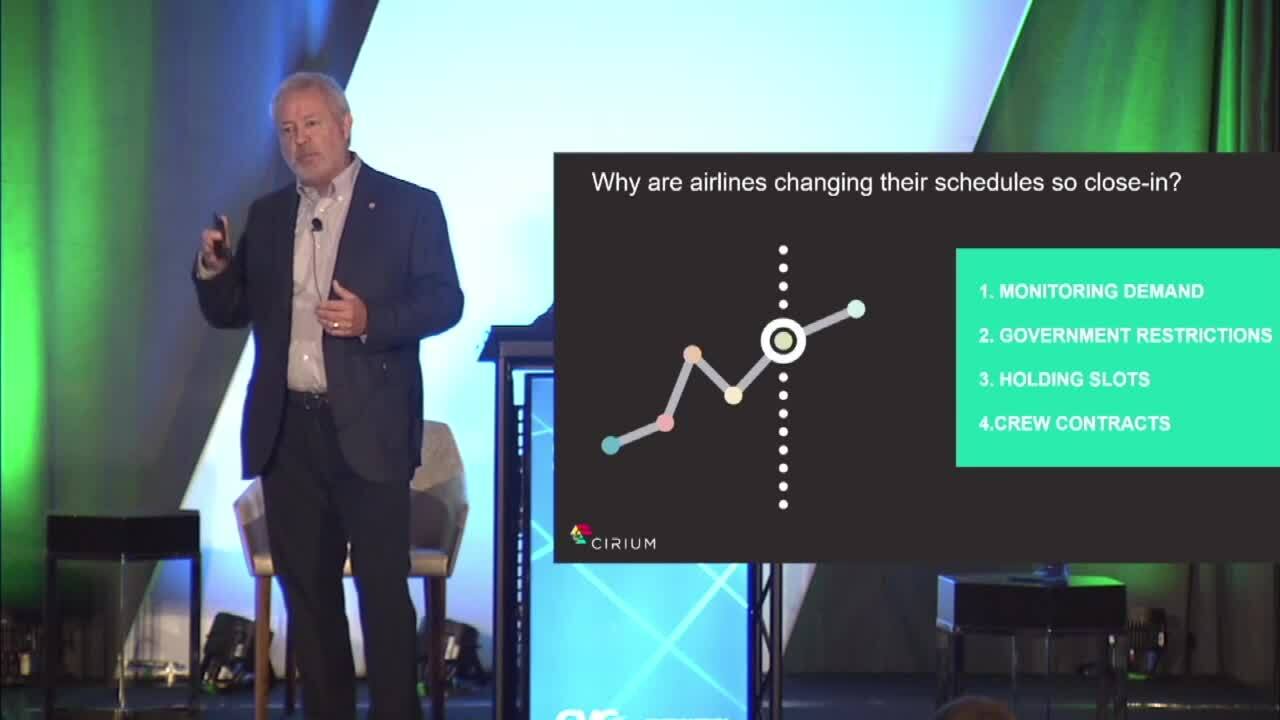The quality of the data used to inform strategic planning and operations has always mattered. Today, the question of data quality has become mission critical for successfully – and swiftly – navigating change and is the route to airline recovery in the wake of COVID-19.
The 1-2 punch? Not only are aviation industry professionals brutally aware they can no longer depend upon the data used prior to the crisis, but also the datasets now need to provide a different picture both in scope and level of detail. Plus, requirements to solve this data gap have never been more urgent.
The competitive divide has grown between companies who’ve upgraded their data prior to the crisis and those which rely on less robust, multi-sourced datasets offering varying levels of scope and accuracy.
Small wonder those who were already questioning the quality of their data now feel like they’re flying blind. So, what is the way forward? When it comes to effective digital transformation, it’s not just a case of reviewing data quality, it’s about identifying the right mix – drawn from trusted sources – that can be deployed at pace to drive responsive strategies for operational change.
Cirium’s business is predicated upon closing the data gap. Since the outbreak of the pandemic, we’ve further optimized our own operations to provide enhanced data solutions designed to accelerate how airlines can navigate that change. Using last year’s published schedules as the single source of market insights is not going to help for 2021 planning…
“What happened 12 months ago has gone out the window.” – Jeremy Bowen, CEO, Cirium
COVID-19 has disrupted many foundational data sources, including industry schedules, airline operations, airline fleets, aircraft seat capacity and industry traffic and fares. Many of the assumptions used to create the foundational data no longer hold.
Why are published schedules less predictable?
Jim Ogden, Director, Products and Services at Cirium, recently shared his insights on the topic to a room full of aviation professionals at the 25th Annual International Aviation Forecast Summit.
The new window on our world
Take the first step to understanding what has changed? Industry schedules are arguably the most important of foundational data sources – so, let’s examine the impact on these as an example:
Pre-COVID-19
- Airlines published their schedules 6-11 months in advance
- Schedule changes inside 4 months of departure were minor
- Once crew assignments were in place, only day-of-departure operational issues would cause a flight cancelation
- Airlines flew 98+% of their published schedule
Post-COVID-19
We are currently seeing a change in the behavior of airline network planning teams – trends that are playing out worldwide:
- Airlines are waiting 4-8 weeks prior to departure
- Changes are happening 1 to 2 weeks before departure, some cases days out
- Cancellations are now happening 1 to 2 days out, for non-operational reasons
Why are we seeing these changes? These behavior changes are a result of:
- Airlines testing the waters when they put schedules out, monitoring to capture demand as soon as it materializes – requiring them to offer the service. If the bookings don’t materialize, they cancel the service
- Governmental changes in the form of travel bans and/or quarantine requirements are impacting routing, circuity, and operational planning
- Airlines are protecting current markets by holding on to key airport slots
- Crew contracts subject to fluctuations, albeit in different ways around the world, outside the US environment. (Ex; while the CARES Act has minimized crew cost considerations in the US, in other parts of the world crew contract rules will influence how close-in schedule changes are made.
Quality data helps to reveal the whole picture
The pitfalls of poor data are legion at the best of times include questionable results, added uncertainty, inappropriate staffing, poor customer service and new financial risks were the penalties paid before COVID-19.
No matter how uncertain it may feel, the Cirium team has risen to the challenge – swiftly developing new processes to account for the many changes that have occurred in the industry, delivering with accuracy, at speed.
Operations data is an important foundational data source that sheds light beyond what routes are being flown. Cirium’s enhanced 360-degree view provides context across schedule time, delayed, weather, de-icing rules in effect and ATC flow controls. It provides insights on wider airport operations – creating a holistic picture that enables you to see actual verses plan or surrounding flight operations. Many customers are also benchmarking partners and competitors and building more resilient flight schedules based on actionable insights from Cirium’s decision analytics.
Flight status and cancellations data from Cirium Core also provide valuable insights on block times. Unsurprisingly, with 50% fewer planes in the sky, flights aren’t encountering any congestion, and most aircraft are arriving early. If airlines can better anticipate these changes, they can save a lot of money – on fuel, crew and airport staffing costs.
As detailed in this chart, year-on-year actual flight times are significantly shorter, yet airlines aren’t reflecting these changes in their published schedules:

How the leading airlines are delving deeper
When decision makers need the most complete and accurate picture, they depend on the quality of the data they have. Even when data is a focus, there can be gaps. Currently, Cirium is seeing customers go even deeper – utilizing layers of analytics to gain 360-degree insights to inform the most dynamic data-led strategy.
Cirium sees three keys to harnessing data for smarter planning:
- Combining a variety of data sources, both internal and external
- Working with flexible datasets for dynamic analysis
- Mixing individual data elements together to compare historical and future scenarios
Airports are also raising their game. And, in response to the need for detailed global insights, we’ve also enhanced our Passenger traffic and fares data, designed to help airports recruit and retain airline business.
How to combine quality data for optimum results
All too often, data is developed in a silo, and when planning and operational data are out of sync, the data quality suffers. By combining data from different parts of the business, we can better triangulate the results and greatly improve the data’s quality.
For example, network planning and business development professionals can get more granular with scenario analysis when combining schedules, fleets, and historical status.
- Mix up your data – yours, third party, schedules and traffic, historical and real-time
- Create a flexible environment – continual updates, dynamically manipulated through a fluid cloud environment
- Get smart about which changes are worth your time – smart, configurable analytics on top flexible data signal where to focus.
See our latest insights, and, upcoming and recent events.
Emerging stronger
It’s commonly said disruption drives innovation. COVID-19 has taken disruption to a devastating new level. However, in a time when silver linings look thin on the ground, it’s empowering to realize harnessing quality data not only holds the key to airline recovery, but also for emerging stronger in the long run.
To discover how to accelerate ahead of the curve with competitive analytics from Cirium, contact our fleet of experts here.


























































